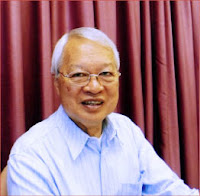[信訊舊文重溫]
聖週:禮儀及靈修的高峰
(二)復活三日慶期(Easter Triduum)
----------------------------------------
我母校澳門聖若瑟大學有慶曾邀得著名禮儀學家安鵬浩神父客座,教授禮儀神學一課。我曾在2009/10學年習修該課;並在(二零一零年)三月十日參與由天主教香港教區禮儀委員會主辦,由國際知名的禮儀學家安鵬浩神父所主講的禮儀講座。在即日徵得講者安神父同意後,曾在澳門堂聯《信訊雙週刊》編譯講座主要內客。今天重溫舊文,希望能與大家一同重溫聖週各禮儀行動中更深入的意思,從而度一個更豐碩的聖週。
----------------------------------------
復活三日慶期(Easter Triduum)
1. 「在第三天,祂從死者中復活」。由此信條,教會發展出復活三日慶期的禮儀。
a. 聖安博(信函23)寫道:「我們不可僅僅舉行基督受難日禮儀,也要在祂復活的日子舉行禮儀,好使我們有痛苦之日亦有喜樂之日。這就是至聖三日(Holy Triduum),其內基督受苦、被埋,而且復活起來」。於是,復活三日慶期就是聖週星期五、聖週星期六,和復活主日。
b. 直至第七世紀,羅馬教會引入在聖週星期四紀念上主晚餐的傍晚彌撒。到第十世紀,聖週星期四已成為三日慶期的一部分,即是主日要從中被剔除。梵二就作出了妥協,把三日慶期的概念擴展到聖週星期四的晚上(編譯按:換言之,採用了猶太思想:一天始於傍晚日落西山之後)。
2. 從第三世紀戴爾都良(Tertullian)的時候起,聖週星期五和聖週星期六都是守齋的日子,而復活節則是歡宴的日子。這二天的守齋是慕道者為聖洗聖事的當下準備,而整個基督徒團體都陪同他們一起守齋。守齋是從日出到日落為止。由於領受聖體曾被認為會破壞守齋,所以不會在聖週星期五和聖週星期六並不舉行彌撒。
a. 人們守齋(減少食量)有著不同的原因:因為貧窮、苦行生活、抗議,或外貌的原因。聖週星期五的守齋是我們向受苦和受死的基督、以及我們向那些在這一天甚至在復活主日因貧困的緣故而被迫守齋的弟兄姊妹的共融的方法。
b. 歡宴的時刻是在復活前夕,當慕道者受洗時、當基督徒團體更新其領洗宣願時、以及當復活的基督在復活的餐桌上主持祂的盛宴開始。復活主日是眾日之日(day of days),故此擴展出八日慶期,這八天猶如一天。在古時,這八日慶期是指新入教者要在這八天內都穿上聖洗白衣。
a. 聖安博(信函23)寫道:「我們不可僅僅舉行基督受難日禮儀,也要在祂復活的日子舉行禮儀,好使我們有痛苦之日亦有喜樂之日。這就是至聖三日(Holy Triduum),其內基督受苦、被埋,而且復活起來」。於是,復活三日慶期就是聖週星期五、聖週星期六,和復活主日。
b. 直至第七世紀,羅馬教會引入在聖週星期四紀念上主晚餐的傍晚彌撒。到第十世紀,聖週星期四已成為三日慶期的一部分,即是主日要從中被剔除。梵二就作出了妥協,把三日慶期的概念擴展到聖週星期四的晚上(編譯按:換言之,採用了猶太思想:一天始於傍晚日落西山之後)。
2. 從第三世紀戴爾都良(Tertullian)的時候起,聖週星期五和聖週星期六都是守齋的日子,而復活節則是歡宴的日子。這二天的守齋是慕道者為聖洗聖事的當下準備,而整個基督徒團體都陪同他們一起守齋。守齋是從日出到日落為止。由於領受聖體曾被認為會破壞守齋,所以不會在聖週星期五和聖週星期六並不舉行彌撒。
a. 人們守齋(減少食量)有著不同的原因:因為貧窮、苦行生活、抗議,或外貌的原因。聖週星期五的守齋是我們向受苦和受死的基督、以及我們向那些在這一天甚至在復活主日因貧困的緣故而被迫守齋的弟兄姊妹的共融的方法。
b. 歡宴的時刻是在復活前夕,當慕道者受洗時、當基督徒團體更新其領洗宣願時、以及當復活的基督在復活的餐桌上主持祂的盛宴開始。復活主日是眾日之日(day of days),故此擴展出八日慶期,這八天猶如一天。在古時,這八日慶期是指新入教者要在這八天內都穿上聖洗白衣。
(待續)
安鵬浩神父(Rev. Anscar J. Chupungco O.S.B.),本篤會士,菲律賓保祿六世禮儀學院主任,菲律賓天主教主教團禮儀委員會執行秘書。他曾任教於宗座羅馬聖安瑟莫禮儀學院超過20年,亦曾出任宗座聖禮部顧問。他已於2013年1月9日安息主懷。
English Original:
[Both text and audio can be downloaded from the website of the Hong Kong Catholic Diocesan Liturgy Commission]
LITURGY AND SPIRITUALITY OF HOLY WEEK
Anscar J. Chupungco, OSB
THE EASTER TRIDUUM
1. "On the third day he rose again from the dead". From this article of faith the church developed the observance of the Easter Triduum.
a. St. Ambrose (Letter 23) writes: "It is necessary that we observe not only the day of Christ's passion, but also the day of his resurrection, so that we may have a day of bitterness as well as day of joy. This is the holy Triduum in which Christ suffered, was buried, and rose again". Hence, Friday, Saturday, and Sunday.
b. Toward the seventh century the Roman Church introduced the memory of the Lord's Supper on Holy Thursday with an evening Mass. By the tenth century Holy Thursday came to be regarded as part of the Triduum, which meant that Sunday was excluded from it. Vatican II has made a compromise, by extending the concept of Triduum to the evening of Holy Thursday.
2. From the time of Tertullian in the third century Good Friday and Holy Saturday were days of fasting, while Easter was the day for feasting. The two days of fasting were an immediate preparation of the catechumens for baptism, with the Christian community observing the fast with them. Fasting was from sunrise to sunset. Because Holy Communion was considered to break the fast, Mass was not celebrated on Good Friday and Holy Saturday.
a. People fast for various motives: because of poverty, asceticism, protest, or cosmetic reason. The Good Friday fast is our way of expressing sorrow over the suffering and death of Christ, and of showing our union with those who on this day and even on Easter Sunday are forced to fast on account of poverty.
b. Feasting begins on Easter vigil when candidates are baptized, when the Christian community renews its baptismal promises, and when the risen Christ hosts the Easter table of his body and blood. Easter Sunday is the day of days, which is extended to eight days (octave), as if these were still Easter Sunday. In antiquity this was insinuated to by the practice of the neophytes who wore their white baptismal garment for eight days.

沒有留言:
張貼留言